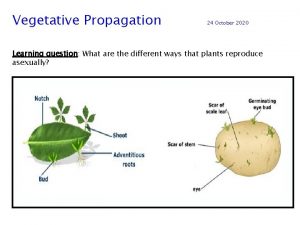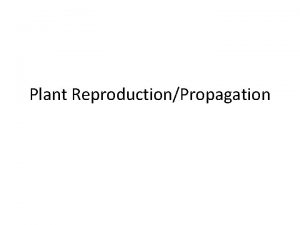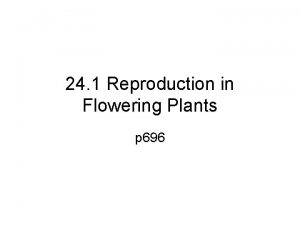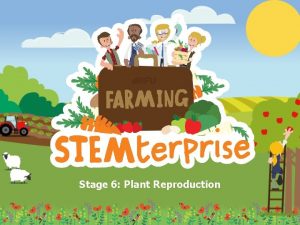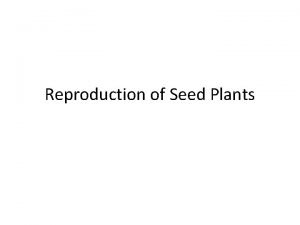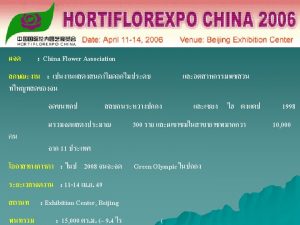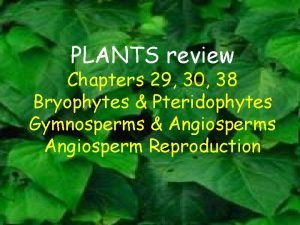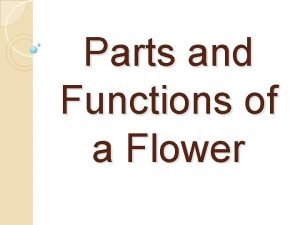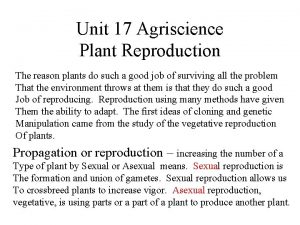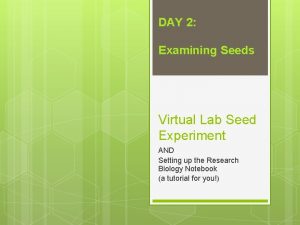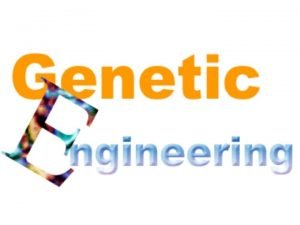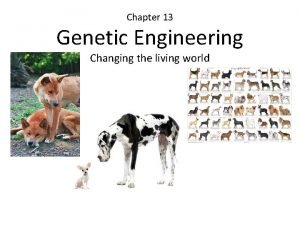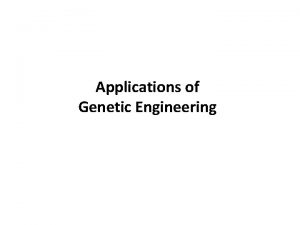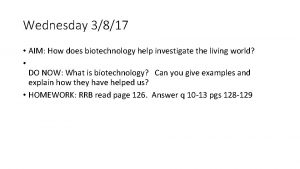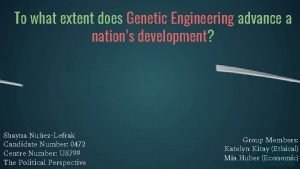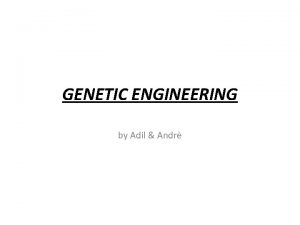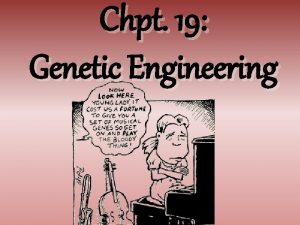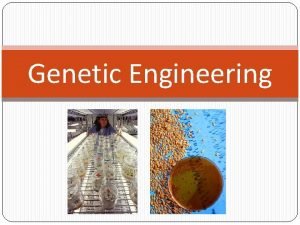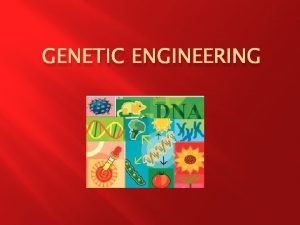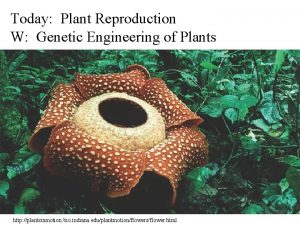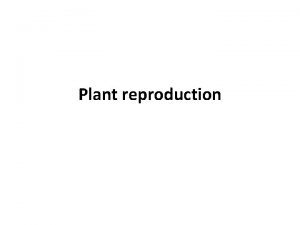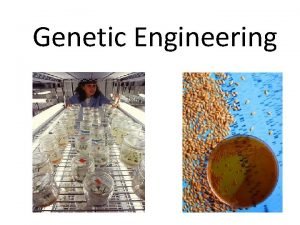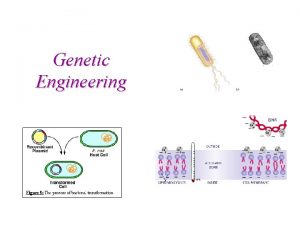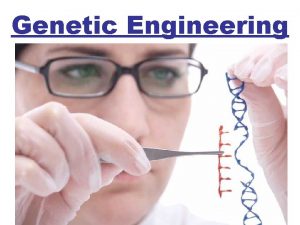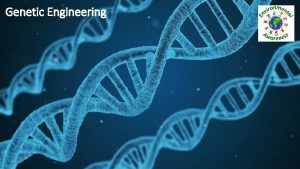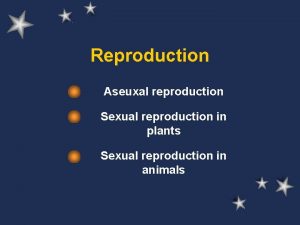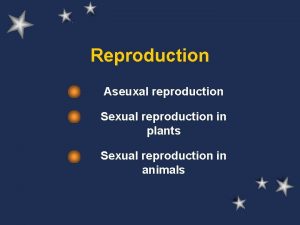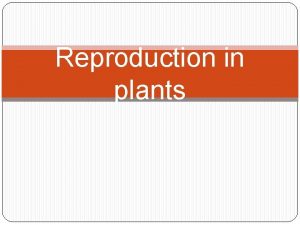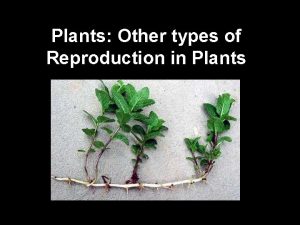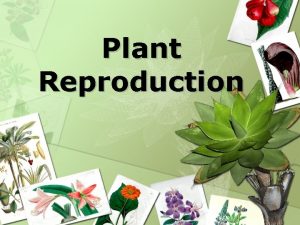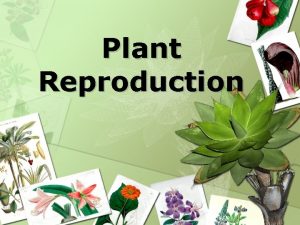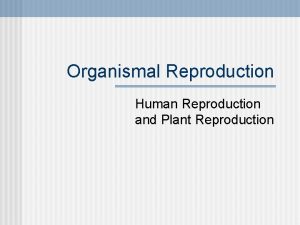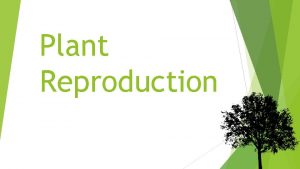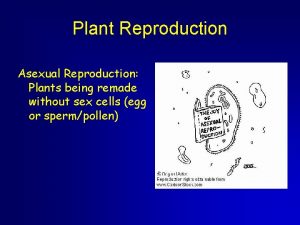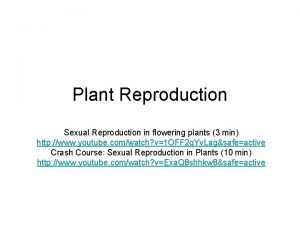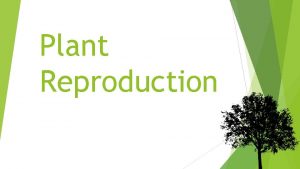Today Plant Reproduction W Genetic Engineering of Plants








































- Slides: 40

Today: Plant Reproduction W: Genetic Engineering of Plants http: //plantsinmotion. bio. indiana. edu/plantmotion/flowers/flower. html

Fig 29. 7

Seeds and pollen allow seed plants to reproduce without water Fig 30. 2

Fig 38. 4 Animal pollinators move pollen from one plant to another

Fig 38. 4 Plants reproduce, reward animals with sugar

Fig 38. 2 a typical flower

Fig 38. 2 Angiosperm Life Cycle

Fig 38. 5 Each pollen grain has 3 nuclei, two sperm and one for the pollen tube N N N

Fig 38. 5 Each pollen grain has 3 nuclei, two sperm and one for the pollen tube nuclei N sperm N N

Pollen tubes can grow quite long… corn stigma corn seeds

The pollen tube grows to the egg and the sperm fuse with the egg= zygote and polar nuclei= endosperm Fig 38. 5

Fig 38. 7 The zygote then develops into an embryo surrounded by the endosperm and seed coat = the seed

Fig 38. 8 The seed must contain enough nutrients to nourish the embryo until it can begin photosynthesis

Seed size is a good indicator of how much energy is stored to support early seedling growth.

Which seed likely requires light to germinate?

Fig 38. 11 Seed dispersal can be by wind or often also by animal

Fig 38. 10 Fruits: Animals can get nutrients to disperse seeds

Seed Germination. . . Fig 38. 9

Capsaicin is a deterrent to seed eating mammals

Capsaicin is a deterrent to seed eating mammals

Is this plant reproducing sexually?

Problem of Inbreeding • Close relatives have a higher probability of carrying the same genetic defects • Decreases genetic diversity see pg 813 and/or http: //users. rcn. com/jkimball. ma. ultranet/Biology. Pages/S/Self. Incompatibilty. html

How do plants avoid inbreeding? male plant Some plants, like humans, separate the sexes--i. e. , some plants have only male flowers and others only female flowers. Fig 38. 13 female plant

Some plants physically separate the anthers and stigmas Fig 38. 13

Some plants separate the anthers and stigmas

How do plants avoid inbreeding? • Some plants, like humans, separate the sexes --i. e. , some plants have only male flowers and others only female flowers. • Some plants separate the anthers and stigmas. • Some plants have a cellular mechanism for avoiding inbreeding: self-incompatibility see pg 813

What is self-incompatibility? • Plants, like animals have the ability to distinguish self tissue from non-self tissue. • In humans, generally non-self tissue is rejected, so tissue transplants can be a problem. • In some plants self-pollen is rejected (= self-incompatibility), and only non-self pollen is allowed to fertilize the eggs. see pg 813

Avoiding Inbreeding Sporophytic Self-incompatibility: Stop Germination of Self Pollen on Stigma Found in the Brassica family: mustard, turnips, broccoli… see pg 813

Some signaling steps are known • This SI method requires that a factor from the pollen recognizes a factor from the stigma see pg 813

For sporophytic SI, male factors are made by the parent plant and placed in developing pollen see pg 813

In sporophytic SI the reaction happens on the stigma surface • If the male factor from pollen is recognized as self by the female factor on the stigma surface, then this recognition induces the stigma to secrete a substance that prevents the pollen from germinating. • the substance secreted by the stigma that inhibits self-pollen from germinating is unknown. see pg 813

Only pollen from different plants can germinate see pg 813

Avoiding Inbreeding: Gametophytic Self-incompatibility Stop Pollen Tube Growth in Style Found in the Solanaceae family: tomato, chili, tobacco… see pg 813 stigma style

Avoiding Inbreeding: Gametophytic SI Stop Pollen Tube Growth in Style • To reach the egg, the pollen tube must grow through the transmitting tract of the style, which secretes an enzyme called ribonuclease (RNase) see pg 813

Avoiding Inbreeding: Solution #2 Stop Pollen Tube Growth in Style • The RNase enters pollen tubes of both self and non-self pollen. see pg 813

Avoiding Inbreeding: Solution #2 Stop Pollen Tube Growth in Style • The RNase is inhibited in non-self pollen, but destroys the RNA in self pollen, and thus stops its growth toward the egg. see pg 813

Self-incompatibility • Self-incompatibility (SI) is a method by which some plants avoid inbreeding • The two main mechanisms of SI are different from one another: one stops the pollen on the surface, the other stops the pollen in the style. • Both methods require that a factor from the pollen recognize a female factor made by the flower, and in both methods this recognition initiates the SI reaction. see pg 813

Fig 38. 2 Angiosperm Life Cycle

Evolution does not always go “forward”… Some angiosperms disperse pollen by wind Fig 38. 4

Today: Plant Reproduction W: Genetic Engineering of Plants http: //plantsinmotion. bio. indiana. edu/plantmotion/flowers/flower. html
 Genetic drift
Genetic drift Genetic programming vs genetic algorithm
Genetic programming vs genetic algorithm Genetic programming vs genetic algorithm
Genetic programming vs genetic algorithm What is the difference between genetic drift and gene flow
What is the difference between genetic drift and gene flow What is the difference between genetic drift and gene flow
What is the difference between genetic drift and gene flow Sexual and asexual reproduction venn diagram
Sexual and asexual reproduction venn diagram Asexualk
Asexualk Asexual vs sexual venn diagram
Asexual vs sexual venn diagram Vegetative reproduction plants
Vegetative reproduction plants Reproduction system of plants
Reproduction system of plants Venn diagram sexual and asexual
Venn diagram sexual and asexual Plant
Plant Non vascular vs vascular plants
Non vascular vs vascular plants Female part of a flower
Female part of a flower Learning objectives of reproduction in plants
Learning objectives of reproduction in plants Flower ovule
Flower ovule A sexual reproduction in plants
A sexual reproduction in plants Today meeting or today's meeting
Today meeting or today's meeting Today is class
Today is class Today meeting or today's meeting
Today meeting or today's meeting Galton details
Galton details Today's lesson or today lesson
Today's lesson or today lesson Example of repitition
Example of repitition Identify the stamen
Identify the stamen Parts and functions of a flower
Parts and functions of a flower Unit 17 plant reproduction
Unit 17 plant reproduction Plants reproduce asexually
Plants reproduce asexually Compare and contrast mitosis and meiosis
Compare and contrast mitosis and meiosis Why are seedless plants important
Why are seedless plants important Plant reproduction virtual lab
Plant reproduction virtual lab Insulin bacteria genetic engineering
Insulin bacteria genetic engineering Section 13-1 changing the living world
Section 13-1 changing the living world Genetic engineering applications
Genetic engineering applications Cloning tasmanian tiger
Cloning tasmanian tiger Purpose of genetic engineering
Purpose of genetic engineering Source russia march
Source russia march Oryx and crake genetic engineering
Oryx and crake genetic engineering Pros and cons of genetic engineering
Pros and cons of genetic engineering Ethical issues of genetic engineering
Ethical issues of genetic engineering Bioluminescence genetic engineering
Bioluminescence genetic engineering Objectives of genetic engineering for class 10
Objectives of genetic engineering for class 10








